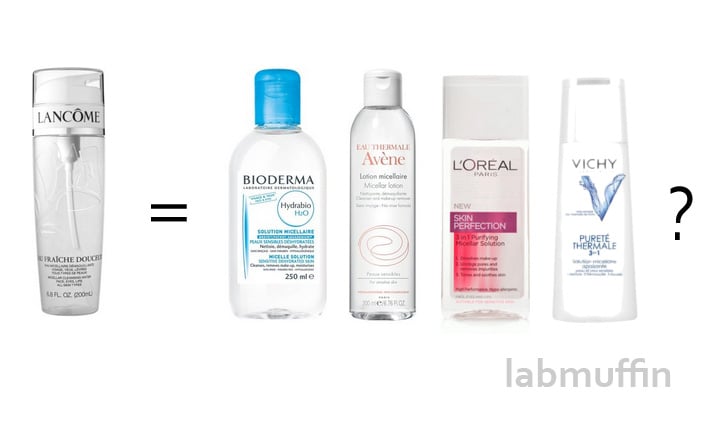More and more brands are jumping onto the micellar water cleanser bandwagon, with supplement company Swisse releasing one recently. Micellar waters are basically very mild soaps that are gentle enough not to require rinsing off – if you missed it, I explained how micellar waters work in this post.
Now that they’ve come out at a range of price points, I thought it might be handy to have a reference list of which ones might be a good cheaper alternative to your fave high end micellar water, based on the surfactant (soapy cleansing ingredient) in them.
As you can see, there are some similarities – most of the L’Oreal micellar waters use Poloxamer 184 as their main active ingredient (L’Oreal Skin Perfection Micellar Solution, Garnier Skin Naturals Micellar Cleansing Water, La Roche-Posay Physiological Micellar Solution, Lancôme Eau Micellaire Douceur, Yves Saint Laurent Toning & Cleansing Micellar Water, Vichy Pureté Thermale Calming Cleansing Micellar Lotion). However, since they’re under the control of one company, it’s likely that there are deliberate differences between products at different price points, even if they use the same actives e.g. the YSL one has to perform differently from the Garnier one.
There are other similarities too – the Bioderma Crealine/Sensibio H2O and Avene Micellar Lotion have the same active (PEG-6 Caprylic/Capric Glycerides). There are a few which use completely different actives – the Swisse, Nuxe, and Yves Rocher versions use actives that don’t appear in other formulas.
Of course, you can’t predict how much of the surfactant there is in each product just from the ingredients list, and the other ingredients will make a difference too, but this will be a good starting point. Hope it helps some of you!








I love tables and mate, your one is soo soo good – its actually brilliant! Really like how you compare the surfactant ingredients and will totally come in handy next time i buy a micellar water
♥ M&L twoplicates